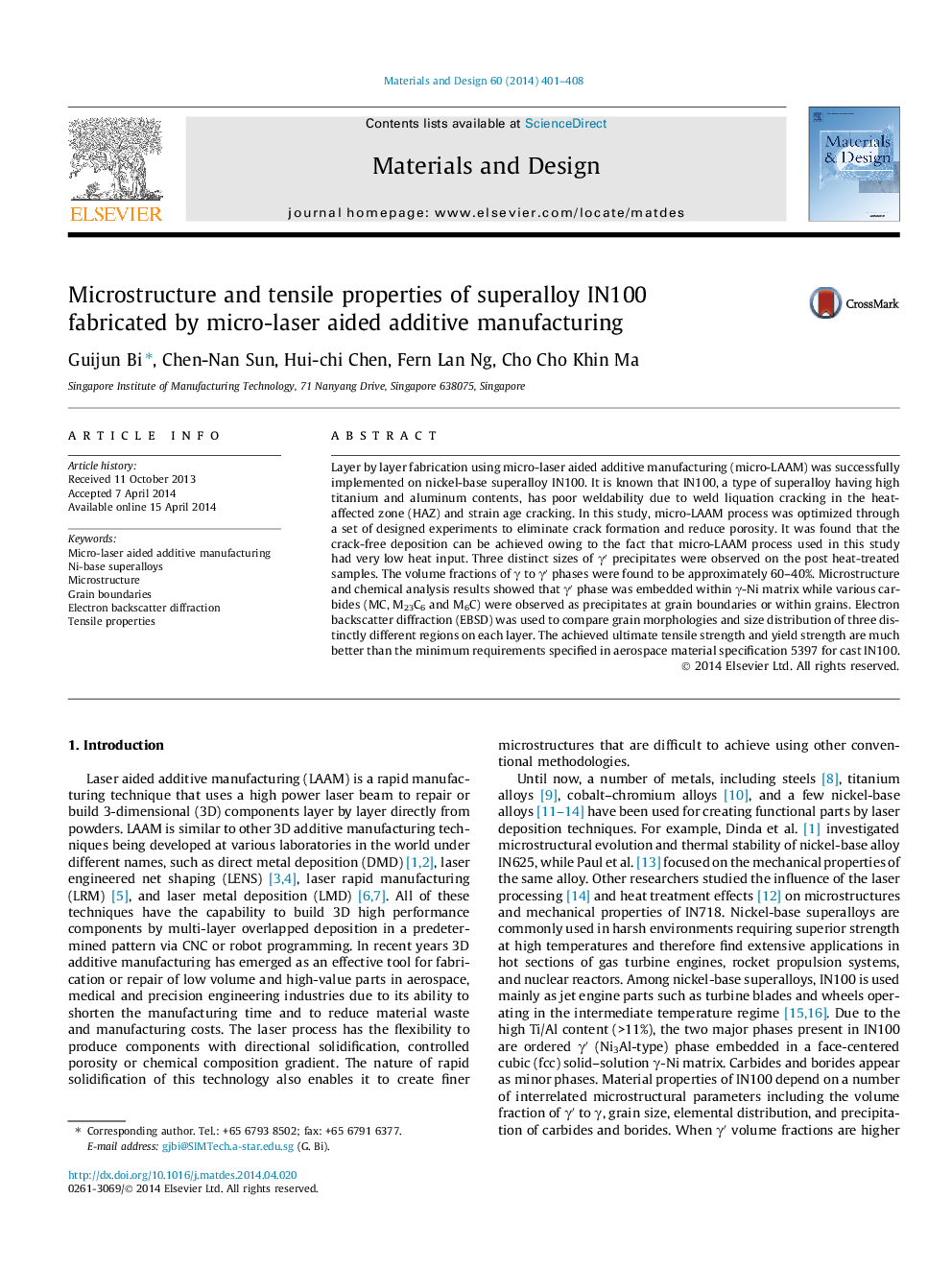| Article ID | Journal | Published Year | Pages | File Type |
|---|---|---|---|---|
| 829210 | Materials & Design (1980-2015) | 2014 | 8 Pages |
•Micro-LAAM was proposed to deposit crack-sensitive Ni-base alloy IN100.•Crack-free deposition of IN100 was achieved using micro-LAAM.•Fine γ′ phase was formed with the γ′/γ approximately 60–40%.•Different types of carbides were observed at grain boundaries and in the grains.•Excellent tensile properties of the deposited IN100 were obtained.
Layer by layer fabrication using micro-laser aided additive manufacturing (micro-LAAM) was successfully implemented on nickel-base superalloy IN100. It is known that IN100, a type of superalloy having high titanium and aluminum contents, has poor weldability due to weld liquation cracking in the heat-affected zone (HAZ) and strain age cracking. In this study, micro-LAAM process was optimized through a set of designed experiments to eliminate crack formation and reduce porosity. It was found that the crack-free deposition can be achieved owing to the fact that micro-LAAM process used in this study had very low heat input. Three distinct sizes of γ′ precipitates were observed on the post heat-treated samples. The volume fractions of γ to γ′ phases were found to be approximately 60–40%. Microstructure and chemical analysis results showed that γ′ phase was embedded within γ-Ni matrix while various carbides (MC, M23C6 and M6C) were observed as precipitates at grain boundaries or within grains. Electron backscatter diffraction (EBSD) was used to compare grain morphologies and size distribution of three distinctly different regions on each layer. The achieved ultimate tensile strength and yield strength are much better than the minimum requirements specified in aerospace material specification 5397 for cast IN100.
